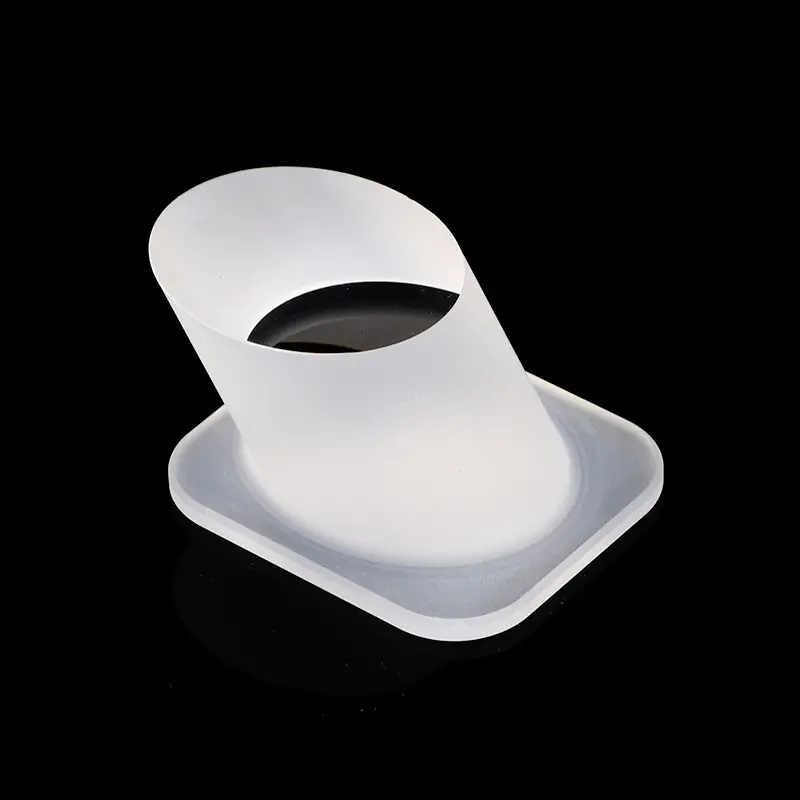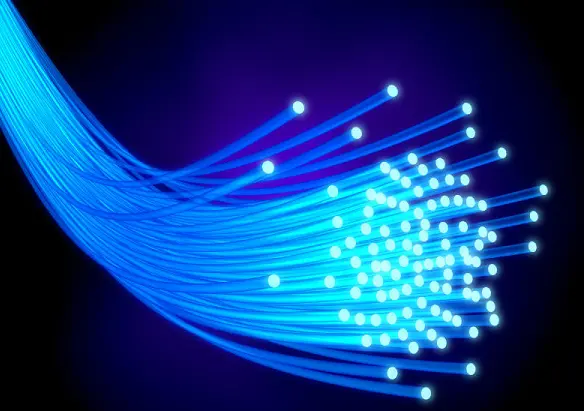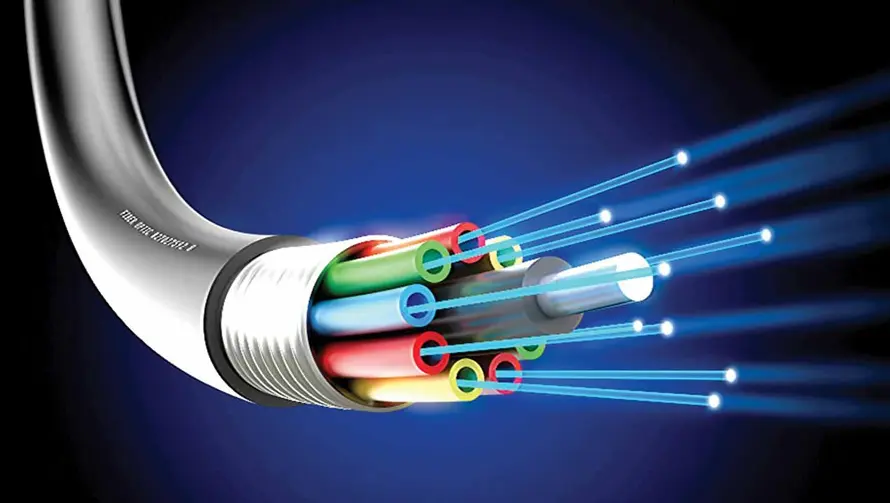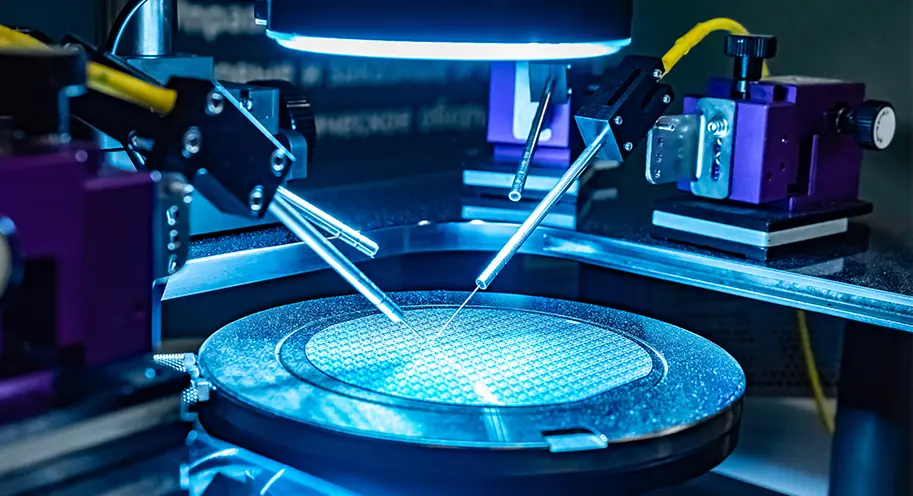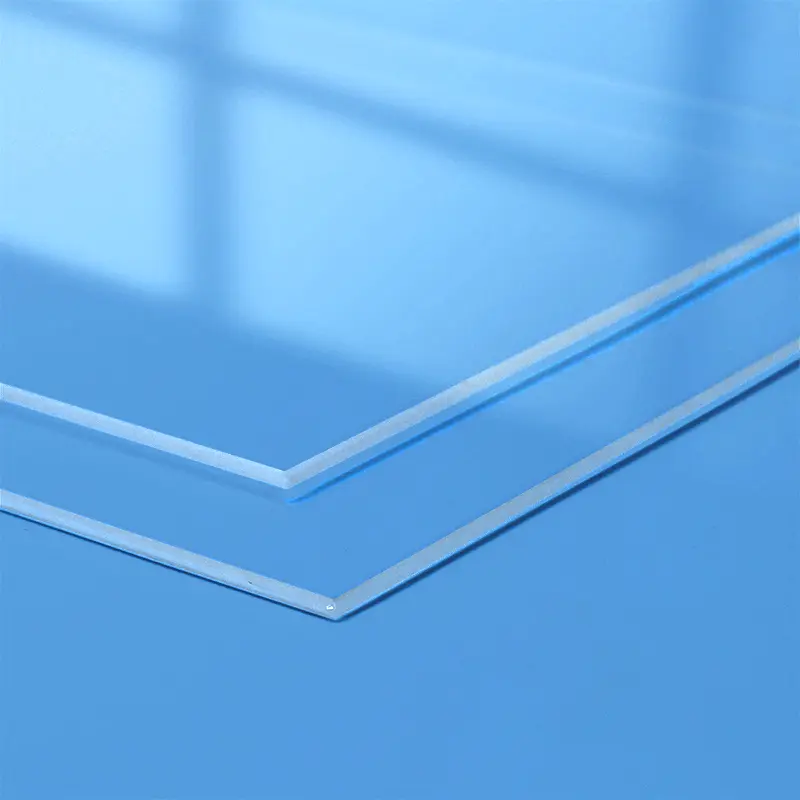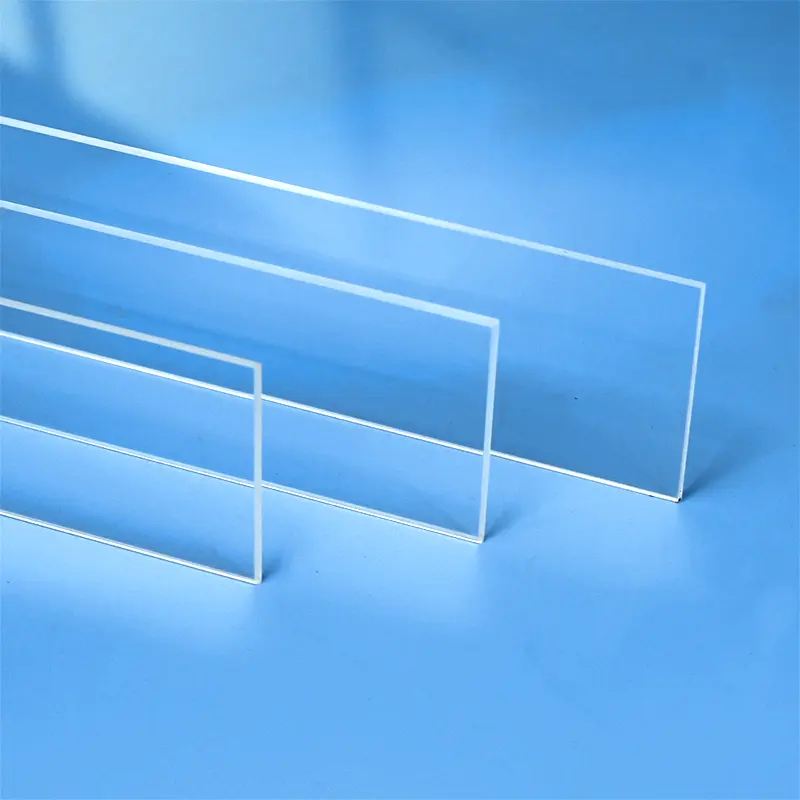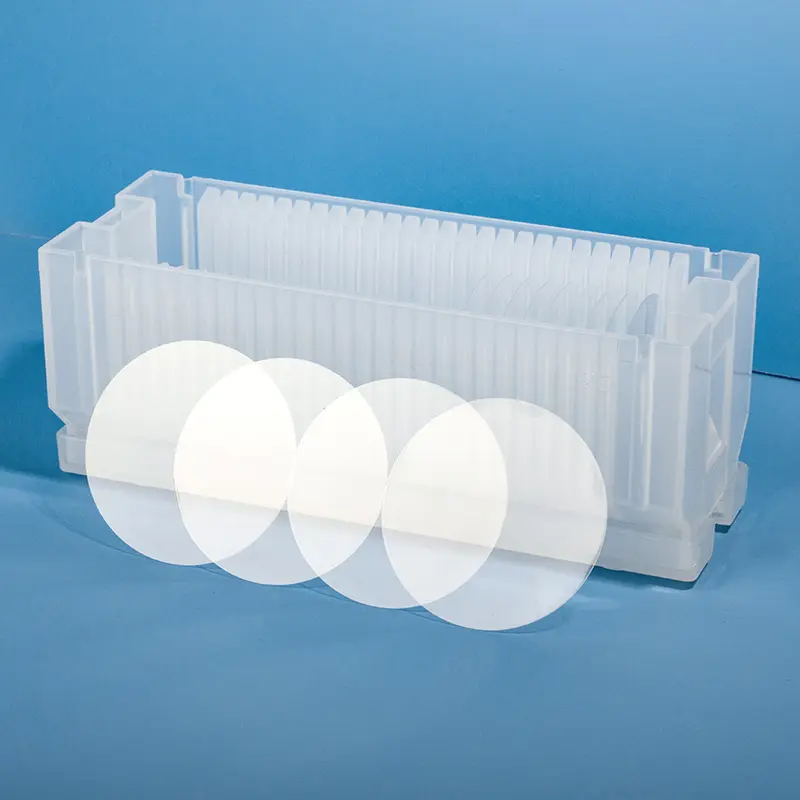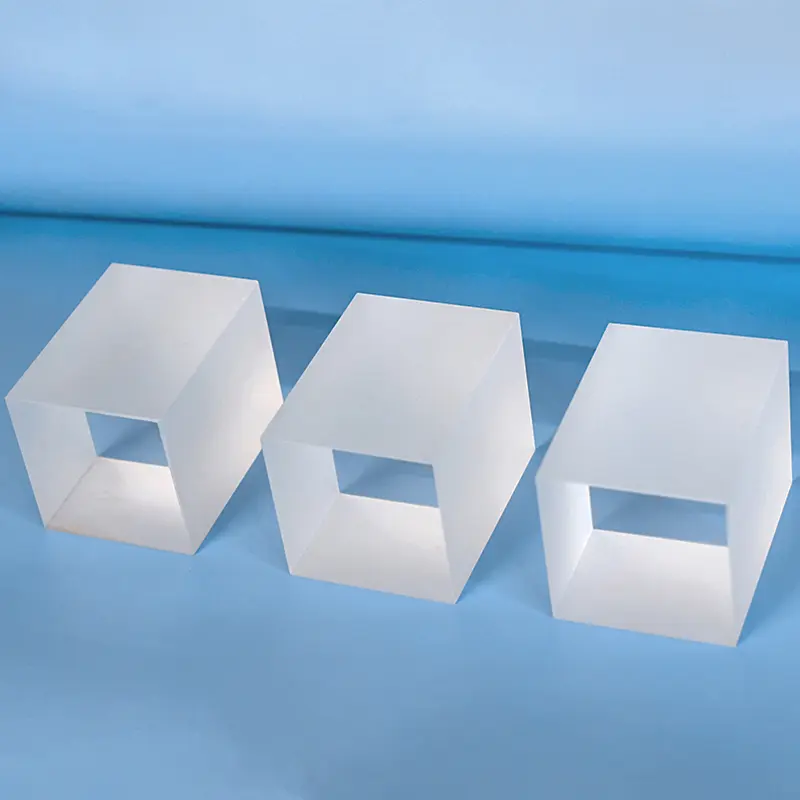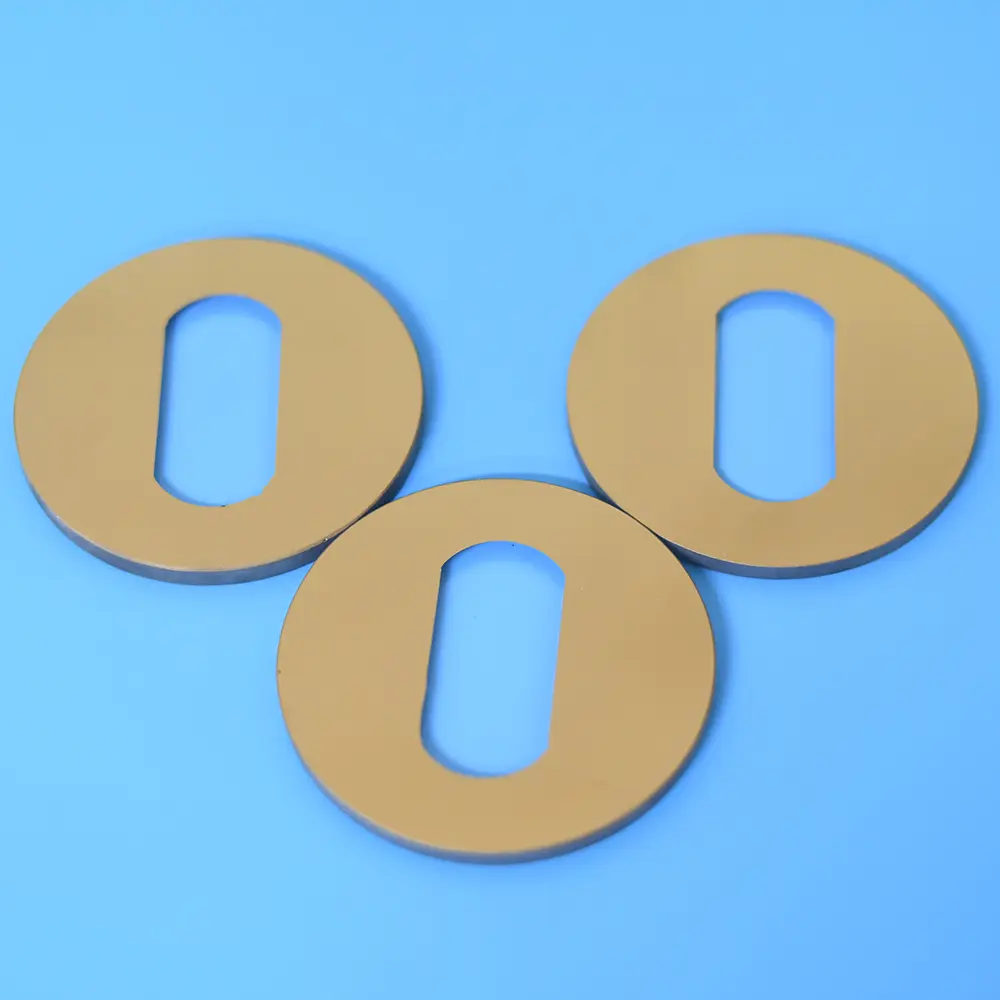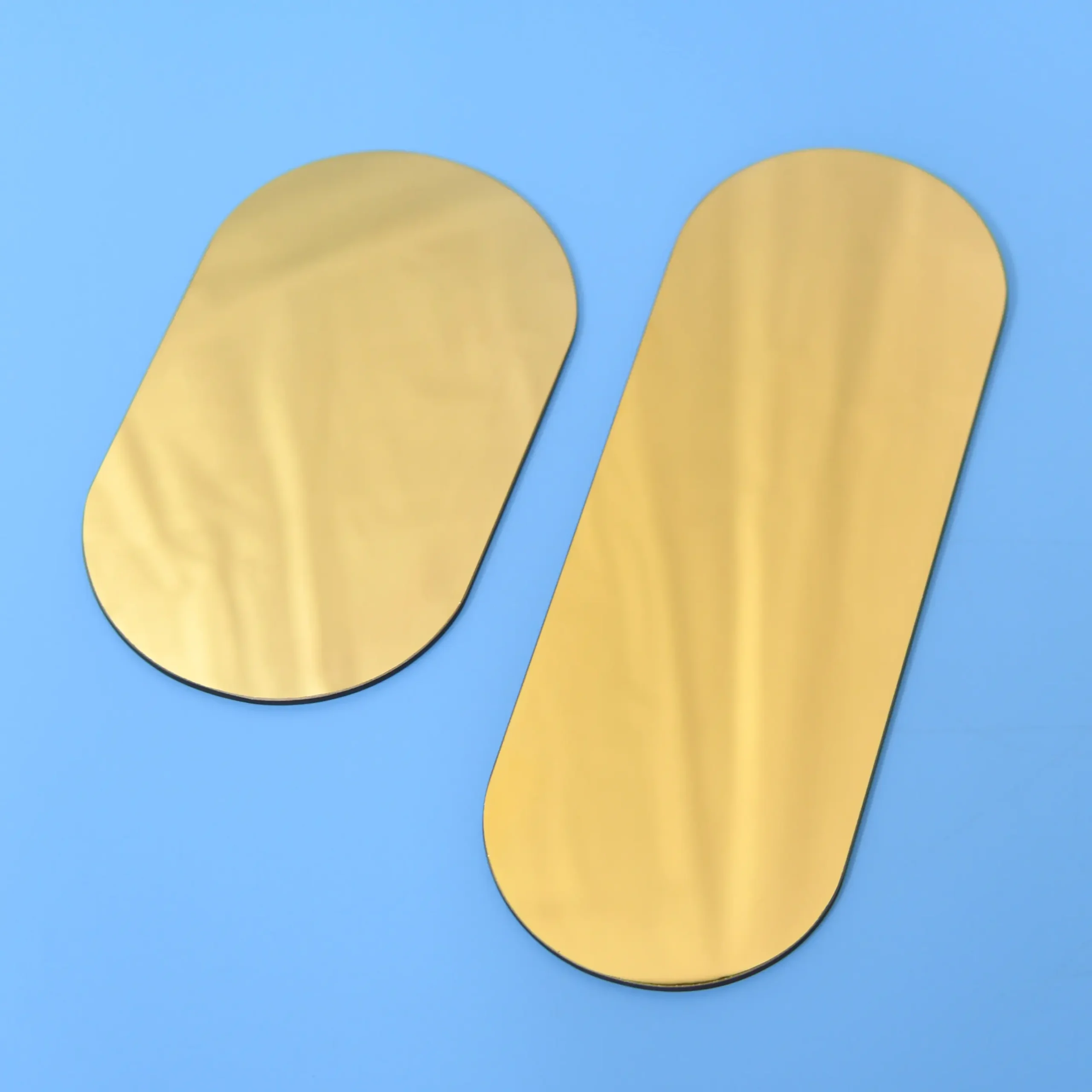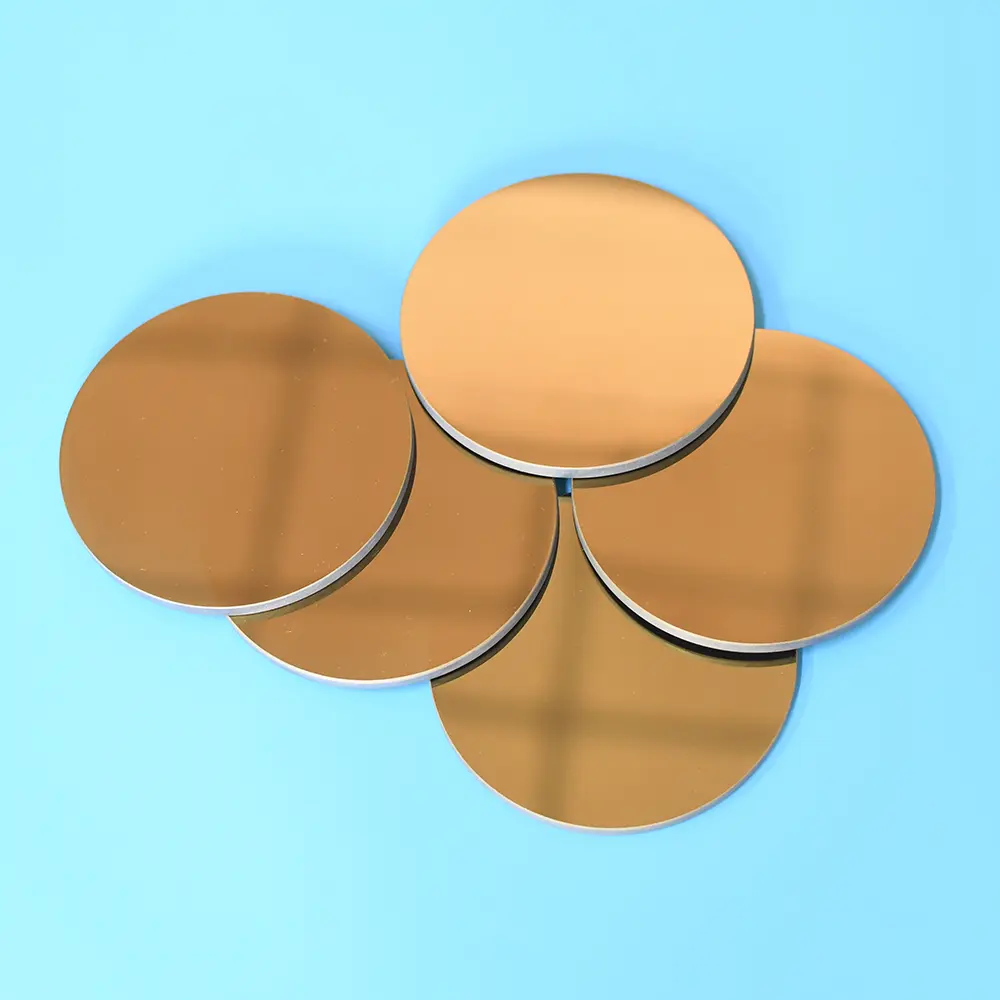Наши кварцевые окна особой формы на заказ, такие как представленный уникальный скошенный цилиндрический дизайн с плоским квадратным основанием, точно обрабатываются из высокочистого плавленого кварца. Эти компоненты, изготовленные на заказ, обладают исключительной химической стойкостью, высокой температурной стабильностью и превосходной УФ-прозрачностью, что делает их идеальными для требовательных наблюдательных применений в полупроводниковой, медицинской, химической и высоковакуумной промышленности, где индивидуальный дизайн и сложные геометрии имеют решающее значение.
| Содержание свойств | Значения свойств |
|---|---|
| SiO2 | 99.99% |
| Плотность | 2,2×10³ кг/см³ |
| Твердость | Твердость по шкале Мооса 5,5 - 6,5; Твердость по Кнупу 570 (при нагрузке 100 г) |
| Предел прочности при растяжении | 4,8 × 10⁷ Па (48 Н/мм² или 48 МПа); 7 000 фунтов на квадратный дюйм (psi) |
| Предел прочности при сжатии | >1.1×10⁹ Pa (160,000 psi) |
| Коэффициент теплового расширения | 5.5×10⁻⁷ cm/cm·°C (20°C-320°C) |
| Теплопроводность | 1,4 Вт/м-°C |
| Удельная теплоемкость | 670 Дж/кг-°C |
| Температура размягчения | 1730 °C (3146 °F) |
| Точка отжига | 1210 °C (2210 °F) |
| Точка напряжения | 1120 °C (2048 °F) |
| Рабочая температура | 1200°C (2192°F) |
| Удельное электрическое сопротивление | 7×10⁷ Ом см (350°C) |
| Размер | Индивидуальный заказ |
| Логотип | Нанесение логотипа по заказу |
Высокая термостойкость
Индивидуальные кварцевые окна способны выдерживать экстремально высокие температуры, имея температуру размягчения около 1730°C. Их можно непрерывно использовать при 1100°C, и они способны выдерживать кратковременные температуры до 1450°C.
Химическая стабильность
За исключением плавиковой кислоты, индивидуальные кварцевые окна обладают высокой устойчивостью к химическим реакциям почти со всеми кислотами, демонстрируя исключительную химическую стабильность.
Термическая стабильность
Индивидуальные кварцевые окна обладают очень низким коэффициентом термического расширения, что позволяет им выдерживать резкие перепады температур. Они способны многократно выдерживать значительные температурные перепады за короткий период без растрескивания.
Оптические характеристики
Индивидуальные кварцевые окна демонстрируют хорошую светопроницаемость во всем спектре от ультрафиолета до инфракрасного излучения. Они имеют коэффициент пропускания видимого света более 93%, а в ультрафиолетовом диапазоне, в частности, коэффициент пропускания достигает 80% и более.
Сценарий применения
Оптическая и светотехническая промышленность
Кастомные кварцевые окна, благодаря своей высокой термостойкости, коррозионной стойкости и низкому термическому расширению, широко используются в оптическом поле для производства линз телескопов, лабораторного оптического оборудования, коммуникационных устройств, дифракционных линз, проекционных дисплеев, сканирующих устройств, оптических компонентов принтеров, а также в камерах и ультраплоских телевизионных экранах.
Оптоволоконная связь
Кварцевое стекло является основным сырьем для оптических волокон, и его высокая чистота обеспечивает качество сигнала оптических волокон. Кварцевое стекло широко используется в производстве стержней оптических волокон и процессе натягивания, обеспечивая высокую производительность и стабильность оптических волокон
Фотоэлектрическая промышленность
В области фотоэлектричества кварцевое стекло используется в качестве жесткого потребного материала в фотоэлектрических модулях, значительно повышая фотоэлектрическую конверсионную эффективность. Кварцевые глиняные горшки, изготовленные из кварцевого стекла, используются в качестве емкостей для плавления поликристаллического кремния для последующей процесса вытягивания монокристаллических стержней кремния или поликристаллических инготов кремния.
Основным материалом кварцевых окон на заказ является высокочистое кварцевое стекло, которое обладает уникальными физическими свойствами, включая чрезвычайно высокую термостойкость (способность к непрерывному использованию при 1100°C и кратковременному воздействию до 1450°C), отличное оптическое пропускание (особенно в ультрафиолетовом диапазоне), чрезвычайно низкий коэффициент теплового расширения и выдающуюся химическую стабильность. Эти характеристики делают их весьма востребованными в различных промышленных применениях.
Кварцевые окна на заказ обладают исключительно высокой устойчивостью к большинству химических веществ, за исключением плавиковой кислоты и горячей фосфорной кислоты. Это делает их весьма подходящими для химических лабораторий, химического производства и других применений, где требуются коррозионностойкие смотровые окна.
Преимущества кварцевых окон на заказ в оптических применениях обусловлены их высокой прозрачностью и широким спектральным пропусканием, что обеспечивает отличное светопропускание во всем диапазоне от ультрафиолета до инфракрасного излучения. Эта характеристика критически важна для применений, требующих высокой четкости и точного контроля света, таких как высококачественные оптические приборы, волоконно-оптическая связь и исследовательское оборудование.
Часто задаваемые вопросы
Мы специализируемся на комплексном производстве высокочистых кварцевых стекольных компонентов. Наши основные продуктовые линейки включают:
Кварцевые трубки и стержни: Широкий диапазон диаметров и спецификаций.
Кварцевые пластины и диски: Прецизионная резка и полировка для оптического и промышленного применения.
Кварцевая лабораторная посуда: Полный ассортимент стандартной и индивидуальной стеклянной посуды, включая стаканы, колбы и лодочки.
Кварц полупроводникового класса: Высокочистые компоненты, такие как технологические трубки и носители, для производства полупроводников.
Компоненты индивидуального изготовления: Мы можем производить сложные детали, адаптированные под ваши уникальные чертежи и спецификации.
Да. Индивидуальное изготовление является основой нашей деятельности. Имея более чем десятилетний специализированный опыт, мы сотрудничаем с компаниями, предлагая высококлассные услуги OEM/ODM. Наши возможности включают сварку, шлифовку, сверление, полировку, гибку и другие методы прецизионной обработки для создания компонентов, точно соответствующих вашим требованиям.
Качество является первостепенным в нашем производственном процессе. Мы являемся производителем, сертифицированным по ISO 9001:2015, гарантируя, что наши процессы соответствуют международным стандартам управления качеством.Наша продукция также проходит строгие испытания SGS на чистоту и производительность. Мы используем высокочистое сырье (до 99,998% SiO2) для производства изделий из плавленого кварца и плавленого диоксида кремния с исключительной термической стабильностью, высокой термостойкостью и химической инертностью.
Мы максимально оптимизировали наш процесс для обеспечения эффективности:
Отправьте запрос коммерческого предложения (RFQ): Присылайте нам свои технические чертежи, спецификации и требования через контактную форму на нашем сайте или по электронной почте.
Быстрый ответ: Вы можете ожидать первоначальный ответ в течение нескольких минут и подробное общение в течение получаса.
Дизайн и Коммерческое предложение: Мы предоставим подробное проектное предложение и конкурентоспособное коммерческое предложение в течение 24 часов.
Прототипирование и производство: После утверждения мы оперативно переходим от прототипирования к полномасштабному производству, чтобы уложиться в ваши сроки.
Сотрудничество с Aoxin Quartz предоставляет несколько ключевых преимуществ:
Проверенный опыт: Имея более чем 10-летний опыт работы в отрасли, мы обладаем техническими знаниями для решения сложных задач.
One-Stop Solution: We manage the entire production process, from sourcing high-purity raw materials to fabricating and finishing complex components.
Конкурентная ценность: Расположенные в крупном центре по производству кварца, мы используем эффективную цепочку поставок и передовое производство, чтобы предложить исключительное качество по конкурентоспособной цене.
Dedicated Partnership: Over 90% of our clients become long-term partners. We are committed to your success through responsive service, reliable quality, and innovative solutions.

